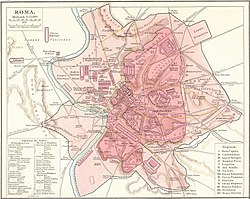This article needs additional citations for verification .(January 2021) |
You can help expand this article with text translated from the corresponding article in Dutch. (August 2012)Click [show] for important translation instructions.
|
| Location | Regione VIII Forum Romanum |
|---|---|
| Type | Roman temple |
| History | |
| Builder | Quintus Fabius Maximus Verrucosus |
| Founded | 215 BC |

The Temple of Venus Erycina (Latin: Aedes Veneris Erycinae) was a temple on the Capitoline Hill in Ancient Rome dedicated to Venus Erycina. This was an aspect of the goddess Venus. Later this temple was probably called the Temple of the Capitoline Venus (Aedes Veneris Capitolinae). [1] There was another temple with the same name in Rome, the Temple of Venus Erycina (Quirinal Hill).

